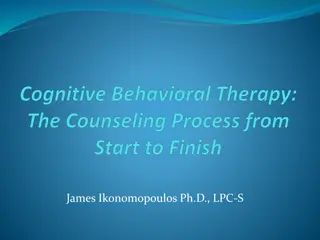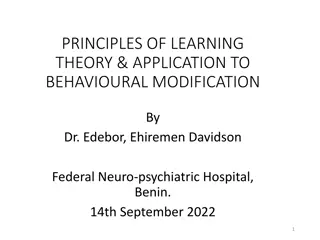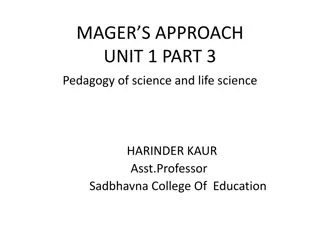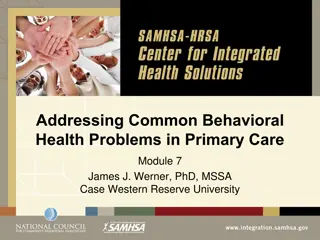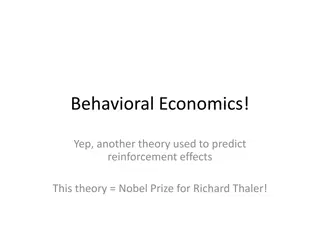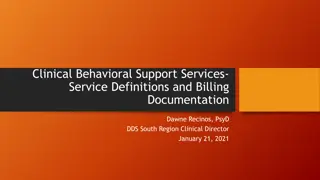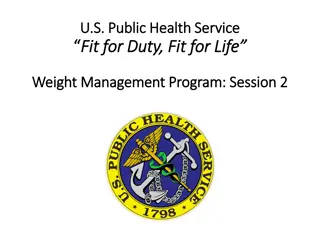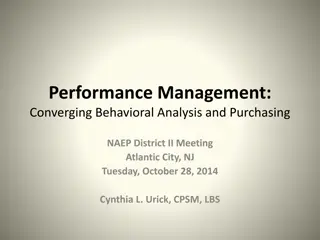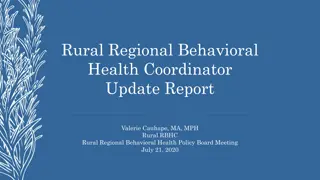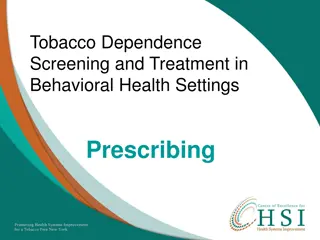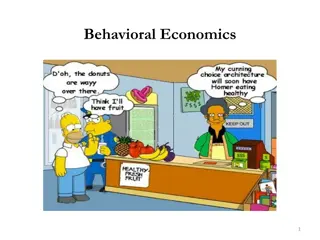Behavioral Objectives in Education
Behavioral objectives in education are essential for effective teaching and learning. They provide clear direction on what students will achieve and how teachers can facilitate that learning. Different types of objectives, such as general and specific objectives, help in structuring educational goals. Methods like Bloom's approach and Mager's approach are commonly used for writing objectives in behavioral terms. It's crucial for objectives to be specific, achievable, and aligned with students' needs. Various domains like cognitive, affective, and psycho-motor play a role in shaping instructional objectives. By understanding and applying these concepts, educators can enhance the quality of education delivery.
Download Presentation

Please find below an Image/Link to download the presentation.
The content on the website is provided AS IS for your information and personal use only. It may not be sold, licensed, or shared on other websites without obtaining consent from the author.If you encounter any issues during the download, it is possible that the publisher has removed the file from their server.
You are allowed to download the files provided on this website for personal or commercial use, subject to the condition that they are used lawfully. All files are the property of their respective owners.
The content on the website is provided AS IS for your information and personal use only. It may not be sold, licensed, or shared on other websites without obtaining consent from the author.
E N D
Presentation Transcript
Writing Objectives in Behavioural terms Presented by : Dr. Gopal Singh
Aims & Objectives Aims Aim is general declaration of intent which gives direction to a teaching programme. Aim is the answer to the question of why a subject is taught. Objectives Objectives is a particular point in that direction It is an answer to the question of what will be achieved after the teaching of that topic. Definite and Clear Can be achieved (100%) Mostly the teacher is responsible. Indefinite and Vague Cannot fully achieved (Not 100%) School,society and nation are responsible for their fulfillment. A lot of time taken for their achievement. Time taken is not much.
Types of Aims Intellectual Aesthetic Vocational Practical Moral Psychological Social International
Criteria of Good Objectives They should be based on psychological principles. They should resemble the ideals of democratic education. They Should be able to bring about anticipated changes. They should be in agreement with the time and circumstances. They should be useful. They should be according to the need, abilities and capacities.
Types of Objectives General Objectives Specific Objectives - Knowledge - Understanding -Application - Creativity
Instructional Objectives The objectives expected to be achieved after completion of a unit of instruction may be called instructional objectives.
Methods of writing objectives in behavioural terms Bloom s Approach (Dr. B. S. Bloom) Mager sApproach (Robert Mager) Gronlund sApproach (N. E. Gronlund) Miller s Approach (Robert Millers) NCERT/RCEM Approach (RCEM, Mysore)
Blooms Taxonomy Cognitive Domain (Dr. B. S. Bloom, 1956) Affective Domain (Krathwohl, 1964) Psycho-motor Domain (Simpson, 1969)
Cognitive Domain - Head Knowledge Comprehension Application Analysis Synthesis Evaluation
Affective Domain - Heart Receiving Responding Valuing Conceptualization Organization Characterization
Psycho-motor Domain - Hand Impulsion Manipulation Control Co-ordination Naturalization Habit Formation
Some Examples Cognitive Domain (Recall, Recognition) Affective Domain (Interest, Attitude, Values) Psycho-motor Domain (Drawing skill, Computation skill)
Specific objectives expected change in behaviour The pupil will be able to recall the definition of force and displacement. The pupil will be able to use the various machines in their daily life.




